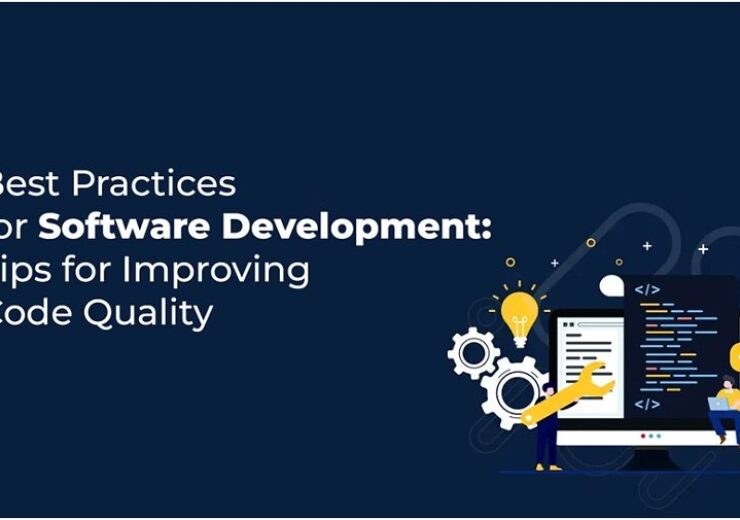What is a Software Process Model? Top 7 Models Explained

If you’ve ever been around a software development company, you’ve probably heard terms like Agile, Waterfall, or Spiral Model. They sound fancy, but they all really answer one question: how do we actually build software in an organised way without losing our minds halfway through?
Because truth be told, writing code is just one part of the story. What really matters is how you plan, build, test, and deliver that code, and that’s exactly what a software process model defines.
What is a Software Process Model?
———————————
A software process model describes the sequence of steps, activities, and tasks required to develop a software product. It organises the development process and creates a structure for what could otherwise be a chaotic process.
As a methodology, some of the questions a software process model helps answer include:
- What needs to be done first?
- Who is responsible for what?
- How will progress be measured?
- When will the product be ready?
Let’s look at the first seven software process models, all of which have contributed to current software development practices.
Top 7 Types of Software Process Models in 2025
———————————
1. Waterfall Model
The Waterfall Model is one of the oldest and most straightforward software development models. Waterfall is linear and sequential, requiring the completion of one phase before another can begin.
Key Phases:
- Requirement Analysis
- System Design
- Implementation
- Testing
- Deployment
- Maintenance
Once a phase is complete, there is no going back. Waterfall, after all, only flows in one direction.
Best For:
Projects requiring low maintenance, and which have clearly specified, well-understood, and static core requirements. Examples include government and manufacturing systems.
Pros:
- Limited project requirements make it easy to manage.
- Suited to low-maintenance projects.
Cons:
- Inflexible to the point of rigidity.
- Poorly suited to projects which evolve.
Many software development companies, particularly for short-term well well-structured projects, are still using the Waterfall.
2. V-Model (Verification and Validation Model)
The V-Model, also called the Verification and Validation Model, is an extension of the Waterfall approach but with a focus on testing at each step of the development cycle. Testing is associated with each development phase, so that a V shape is formed when development and testing progress are visualised.
Best For:
Reliability and accuracy-centred projects like healthcare and banking systems.
Pros:
- Identifying defects is easier, and the focus is on quality.
Cons:
- Regrettably, it is inflexible and poorly suited for projects that have rapidly changing needs.
For this reason, the V-Model is widely used in software development by firms that deal with mission-critical systems that could lead to catastrophic consequences in the event of a failure.
3. Incremental Model
The Incremental Model divides the project into smaller pieces or increments. Each increment delivers a working segment of the software, which is further improved with new features in the following iterations. This model facilitates concurrent development and testing, which contributes to the quicker release of functional software.
Best For:
Projects that need to be delivered quickly and require ongoing enhancement.
Pros:
- Working software is delivered earlier
- Risks are simpler to handle
- Changing requirements may be more easily adapted to
Cons:
- Requires substantial planning
- Integration may become complicated over time
This model is favoured by contemporary software development companies for client-driven projects that are subject to changes.
4. Iterative Model
The Iterative Model is unique as it permits testing and refining of the application during the various stages of the development process, rather than waiting until the end of the development process to evaluate the entire application.
Best For:
Projects that have requirements that are not completely understood at the beginning but are subject to change.
Pros:
- Continuous feedback and enhancement of the project
- Issues are identified earlier and can be resolved promptly
- The scope can be adjusted easily
Cons:
- More resources are needed
- Active client participation and collaboration need to be sustained.
This development model is very common in the software development industry for building dynamic applications and for building prototypes.
5. Spiral Model
The Spiral Model merges components of the Waterfall and Iterative models and is effective for large and high-risk projects where continuous risk evaluation and flexibility are required.
This model consists of four phases, which are completed and repeated in a spiral fashion:
- Planning
- Risk Analysis
- Engineering
- Evaluation
The model alters each completed loop and advances the product while addressing the risk.
Best for:
Large, complex projects with high potential risk or vague requirements.
Pros:
- Effective risk mitigation
- Can extend over long durations
- Highly versatile
Cons:
- Time and cost-intensive
- Requires high-risk management expertise
Software developers in the defence, aerospace, and large enterprise system sectors tend to use this model.
6. Agile Model
One of the most notable and popular ways to approach a project in software development is the Agile methodology. Agile prioritises customer satisfaction, collaboration and adaptability as opposed to the rigidity of classical methods.
Divided into short, rapid development phases known as sprints, which last usually about 2 to 4 weeks. After sprints, a usable chunk of the software is released, and the development team gathers feedback to be used in the upcoming sprints.
Best For:
Projects that need close client collaboration and rapidly changing requirements.
Pros:
- Very responsive and adaptable
- Fostering of collaboration and openness
- Accelerated execution of deliverables
Cons:
- May pose challenges with large teams
- Needs client participation
Agile got its name as a result of the feeling it gives to methods used in software development and project management, and has made its way into the methods used by software development companies, from startups to larger corporations.
7. DevOps Model
The DevOps Model functions on development processes. It is a cultural shift model in software development and IT operations as it integrates both. The model automates processes, incorporates continuous integration, and accelerates continual deployment, therefore attaining rapid releases of high software quality. It highlights partnership and streamlines the repetition of processes, and improves productive output.
Best For:
Those organisations that require software development to be rapid, dependable and to expand in size.
Pros:
- Release software in stages, and high-velocity deployment of software.
- Minimises system failure occurrences.
- Promotes integration in operation.
Cons:
- High-level expertise is a must, and there should be sophisticated tools.
- Not appropriate for smaller, less organised teams.
For more accelerated software delivery with better quality management, development delivery, many sophisticated software companies are focusing on adopting DevOps.
How to Choose the Right Software Process Model
———————————
Selecting a specific process model requires assessing a variety of conditions.
- Project Size: For larger projects, the Spiral or Agile models may be more beneficial.
- Client Alteration: For constant feedback from clients, the Agile or Iterative models work best.
- Risk: When high uncertainty exists, the Spiral model is ideal.
- Project Duration: For short-term projects, the Waterfall or Incremental models may be more appropriate.
Professional software development companies tend to analyse project objectives, risk and scalability in order to ascertain the best fitting model.
Final Thoughts
Understanding software development includes grasping the importance of structure in order to achieve quality, effectiveness, and satisfaction on the part of the customer. The software process model is the framework bearing a guiding system that aligns the team in a cohesive manner to mitigate risk in project development and enhance the outcome.
Choosing the right process model that best aligns with the nature of the project and the objectives of the business is truly project success and value. This can be the methodical progression of the Waterfall model, the Ask Change of the Agile model or the constant change of the DevOps model.



